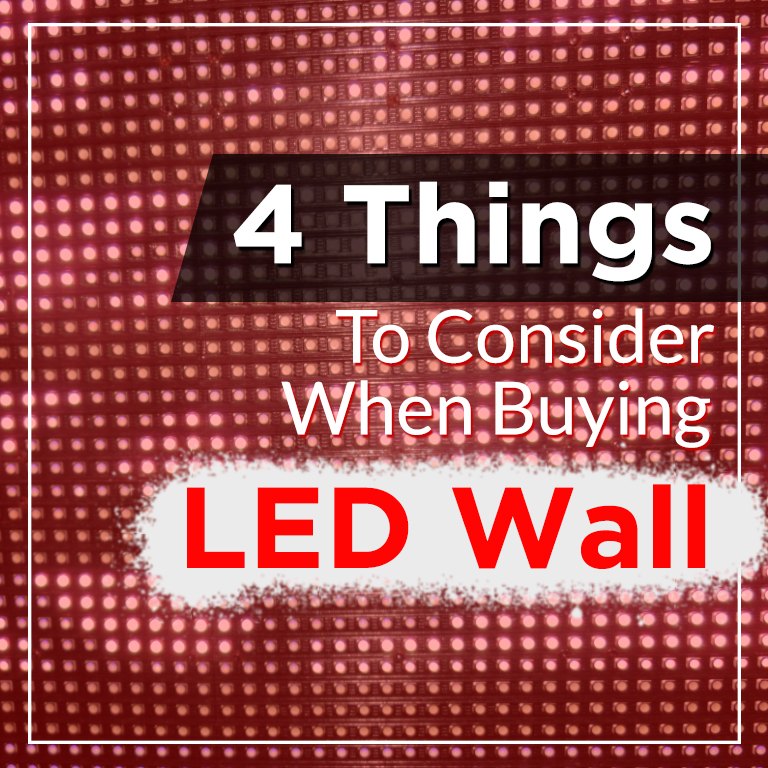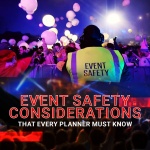
Be it a wedding, a concert, or a corporate conference, there’s bound to be an LED wall in place somewhere in the venue. LED walls not only display content with incredible clarity, but they instantly add wow factor to any setup. You can’t buy an LED wall without forethought, however–it takes careful planning to pick the right display for your needs. To help you get the most out of your purchase, there are a few things to take into consideration when buying an LED wall.
1. Display Location
Will you be using the LED wall indoors or outdoors? Remember that the screen will be exposed to sun and rain if it will be placed outside. LED walls are known for being low-maintenance, but sunlight may make your LED wall appear dark if the wall isn’t bright enough.
If the LED wall will be used indoors, take note of any ambient light sources. A display wall located next to, say, a large window should have high maximum brightness to remain readable despite ambient light and glare.
2. Content
You should also consider the kind of content that your LED wall will display. LED walls come in colored and monochrome varieties, with colored LED walls being more expensive than their monochrome counterparts. Some applications such as insurance firms can work with a monochrome display to simply display text. However, if you want to show images and videos, a colored LED wall is the way to go.
If the content that will go on display is highly detailed, like in the case of a map, you’ll need a wall with higher resolution. Also, try to find an LED wall with multiple format support to make room for more creative display options and audience engagement.
3. Viewing Distance
How far from the LED wall will your audience be standing? Indoor display screens are suitable if viewers will be standing a few meters away–think exhibits and smaller events. Shorter viewing distances require more detail, which translates to a screen with high resolution. Meanwhile, outdoor display screens are better if viewers will be much farther away, such as with an arena-sized event or a carnival in an open area. An LED wall placed outdoors will not need not as much detail and will be fine with a relatively low-resolution screen.
The distance of your audience from the display will also affect the required pixel pitch. The LEDs in a screen are arranged into pixels, and pixel pitch refers to the distance between two pixels. Smaller pixel pitch means less empty space between pixels, higher pixel density, and improved screen resolution. Prices will most likely be higher for screens with smaller pixel pitch, though. Again, an LED wall placed outdoors and with a viewing area several meters away will be fine with a higher pitch display.
The LED screen industry has a few equations to help estimate the needed pixel pitch. Start with a certain average comfortable viewing distance, an estimate of the comfortable viewing distance for most people who will look at your screen. Take your average comfortable viewing distance and multiply it by 2 to get the visual acuity distance. This is the calculated distance that a person with perfect vision should move away from an LED wall to see a non-pixelated image. Then, divide the visual acuity distance (in metric units of length) by 3,438 to get the required pixel pitch. Example:
Average comfortable viewing distance: 4’ 3” or 1.29m
Visual acuity distance: 8’ 6” or 2.58m
Pixel pitch: 2.58m / 3,438 = 0.00075m or 0.75mm
4. Maintenance and Lifespan
LED screens, in general, are more rugged and long-lived than LCD screens. Even rain cannot easily damage an LED wall. However, these screens will also start to degrade after some time. If an LED or two fails, the damaged part can be replaced quickly and on-site, minimizing downtime.
LEDs also generally lose 20% of their initial brightness after the first 2,000 hours or 3 months of use. The LED then degrades very slowly until dying after 100,000 hours or 11 years of use. So, when buying an LED wall, remember that the claimed display brightness of the wall will drop by around 20% after 2-3 months.
One final tip to help you choose between two screens with the same specifications and price range: ask how many individual LEDs the screens have. Between two screens with the same number of pixels, the screen with more LEDs will be brighter and clearer than the other.
If your LED wall is the wrong size, you’re wasting money. If the screen is too dim or the pixels either too close or too far apart, you’re also wasting money. Plan well and keep this list in mind when you buy an LED wall.
Looking for more stage design tips and entertainment industry news? Follow our blog for fresh updates.





